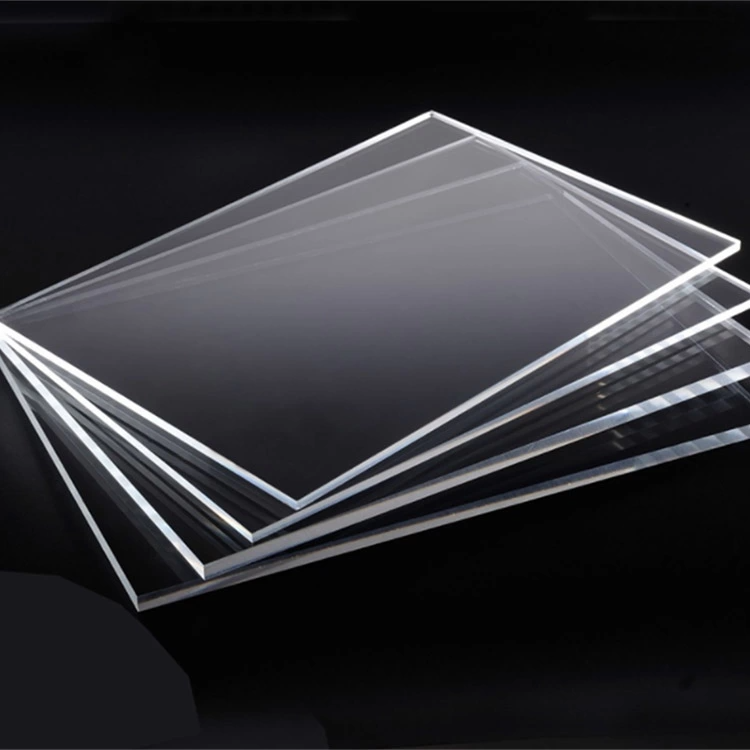Provide you with the latest enterprise and industry news.
Understanding Acrylic for Outdoor Applications
Acrylic sheet, also known by trade names such as Plexiglas or Perspex, is a transparent thermoplastic often used as an alternative to glass. Its popularity stems from its excellent clarity, impact resistance, and versatility. But when it comes to outdoor applications, many wonder: is acrylic truly suitable for prolonged exposure to the elements?
Acrylic sheets can perform exceptionally well outdoors when properly selected and installed. With UV-resistant formulations and adequate thickness, acrylic can withstand years of exposure to sunlight, rain, and temperature fluctuations without significant degradation.
Key Properties of Acrylic Relevant to Outdoor Use
To evaluate acrylic's outdoor performance, we must examine its fundamental material properties:
| Property | Acrylic | Significance for Outdoor Use |
| UV Resistance | Excellent (with UV-stabilized formulations) | Prevents yellowing and degradation from sunlight |
| Weather Resistance | Very Good | Withstands rain, snow, and humidity without warping |
| Impact Strength | 10-20x greater than glass | Resists damage from hail, debris, and accidents |
| Thermal Expansion | High (5-7x greater than glass) | Requires proper installation to allow for expansion |
| Light Transmission | 92% (superior to glass) | Maintains clarity for optical applications |
| Surface Hardness | Good (but can scratch) | Requires protective coatings in abrasive environments |
Benefits of Acrylic for Outdoor Applications
- Superior UV Resistance: Modern acrylic formulations contain UV inhibitors that prevent yellowing and degradation, with lifespans of 10-30 years depending on climate and maintenance.
- Exceptional Impact Resistance: Acrylic won't shatter like glass, making it safer for areas with hail, flying debris, or human traffic.
- Lightweight: Weighing half as much as glass, acrylic reduces structural support requirements and simplifies installation.
- Thermal Insulation: Acrylic provides better insulation than glass, reducing heat transfer in applications like greenhouses or skylights.
- Design Flexibility: Easily thermoformed into complex shapes, allowing for curved architectural elements not possible with glass.
- Maintenance Ease: Requires only occasional cleaning with mild soap and water to maintain appearance.
Limitations and Considerations
- Scratch Sensitivity: Acrylic surfaces are more prone to scratching than glass, requiring careful cleaning techniques.
- Thermal Expansion: Acrylic expands and contracts significantly with temperature changes, requiring proper installation with expansion gaps.
- Chemical Sensitivity: Some solvents, cleaners, and chemicals can damage acrylic surfaces.
- Static Buildup: Can attract dust, requiring more frequent cleaning in dry climates.
- Fire Performance: Acrylic is combustible and burns readily, which may limit certain applications.
Material Comparison for Outdoor Applications
| Material | UV Resistance | Impact Strength | Lifespan Outdoors | Cost | Maintenance |
| Acrylic (UV-stabilized) | Excellent | Excellent | 10-30 years | $$ | Low |
| Glass | Excellent | Poor | Indefinite | $$$ | Moderate |
| Polycarbonate | Good (with coating) | Exceptional | 10-15 years | $$$ | Moderate |
| Standard PVC | Poor | Good | 5-10 years | $ | Low |
| PETG | Good | Good | 7-15 years | $$ | Low |
Common Outdoor Applications for Acrylic
Acrylic provides excellent insulation and impact resistance for architectural glazing.
UV-stable acrylic maintains vibrant colors for outdoor signs and point-of-purchase displays.
Acrylic resists chlorine corrosion and provides excellent light transmission for aquatic facilities.
Used in aircraft windows, boat windshields, and RV windows due to its strength-to-weight ratio.
Superior light transmission promotes plant growth while resisting impact damage.
Protects photovoltaic cells while maximizing light transmission to improve efficiency.

Installation Best Practices for Outdoor Acrylic
Proper installation is crucial for maximizing acrylic's outdoor performance:
- Allow for Expansion: Acrylic expands approximately 0.4 inches per 10 feet for every 20°F temperature change. Always incorporate expansion joints in framing systems.
- Use Appropriate Fasteners: Choose stainless steel or plastic fasteners and use oversized holes to accommodate movement.
- Prevent Moisture Trapping: Design installations to prevent water accumulation against acrylic surfaces.
- Protect Edges: Unprotected edges are vulnerable to stress cracking. Seal edges with appropriate acrylic-compatible sealants.
- Consider Thermal Breaks: In metal framing systems, use thermal breaks to prevent localized overheating.
- Follow Manufacturer Specifications: Adhere to recommended installation practices for the specific acrylic product.
Maintenance and Care Recommendations
Proper maintenance extends acrylic's outdoor lifespan significantly:
- Cleaning Frequency: Clean every 2-3 months in normal conditions, monthly in coastal or industrial areas.
- Cleaning Solution: Use lukewarm water with mild soap (pH neutral) or specialized acrylic cleaners.
- Application Method: Apply with soft cloth or sponge using straight motions. Rinse thoroughly and dry with microfiber cloth.
- Scratch Prevention: Never use abrasive cleaners, paper towels, or ammonia-based products.
- Minor Scratch Removal: Use specialized acrylic polishing compounds and soft buffing pads.
- Protective Coatings: Consider applying acrylic-safe anti-static or hard-coat treatments for added protection.
Conclusion: Is Acrylic Right for Your Outdoor Project?
Acrylic sheet presents an excellent option for many outdoor applications when proper material selection, installation, and maintenance practices are followed. With UV-stabilized formulations, acrylic offers exceptional weather resistance, optical clarity, and impact strength that often exceeds glass at a more affordable price point.
For projects requiring maximum impact resistance in extreme conditions, polycarbonate may be preferable despite its higher cost and lower optical clarity. For permanent architectural installations where scratching is a primary concern, glass remains the gold standard despite its weight and fragility.
Ultimately, the decision depends on your specific requirements for durability, aesthetics, budget, and maintenance capabilities. When in doubt, consult with material specialists who can recommend the optimal solution based on your climate, application, and performance expectations.













